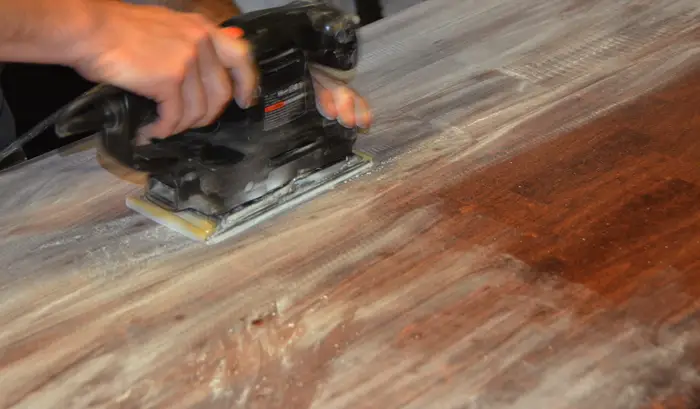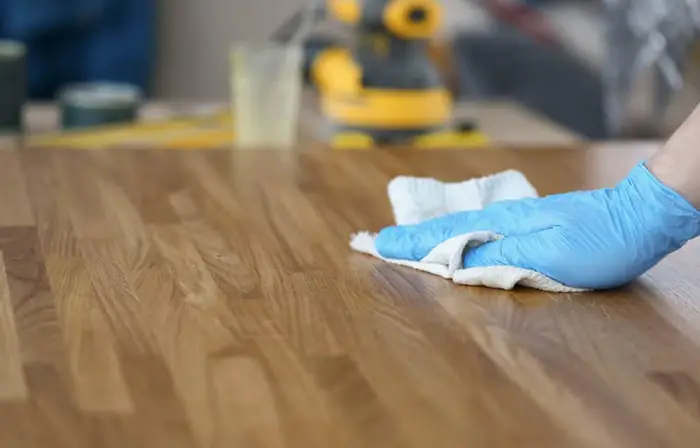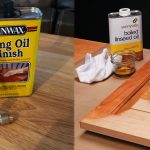What Happens If You Don’t Sand Between Coats of Polyurethane?
Polyurethane is a highly popular finish for a wide variety of surfaces, including wood and metal. But there are debates online about whether you should sand between coats of polyurethane or not.
So, what happens if you don’t sand between coats of polyurethane? If you use an oil-based polyurethane finish, the bonding between layers won’t be good if you don’t sand. As a result, the finish will be prone to chipping over time.
With my decades of experience in polyurethane finishes, I will clarify the topic to eliminate all your confusion. Let’s get started.
Do You Really Need to Sand Between Coats of Polyurethane?
It depends on the type of polyurethane. You may already know that polyurethane is a durable sealer that comes in different types. Oil-based polyurethane gives a glossy look with durable protection. When you coat a surface with oil-based polyurethane, the layer dries into a protective film.
- If you don’t sand the surface before applying the second coat, two layers won’t bond well. As a result, the layers will come off quicker.
- It also reduces the overall finish quality.

The situation is different in the case of water-based polyurethane. It doesn’t create films like the oil-based counterpart, so it isn’t mandatory to sand between coats. Consecutive layers of water-based polyurethane will easily bond with each other.
But I suggest you sand surfaces between coats of polyurethane regardless of the type. Let me tell you why.
Why Do You Need to Sand Between Coats of Polyurethane?

While working with polyurethane finishes, I have figured out you should sand between coats due to the following reasons.
Better Adhesion
As I have already mentioned, coats of polyurethane finish should adhere to each other to form a durable finish. After sanding the previous coat, it creates a suitable surface for the next coat. So, the next coat easily adheres to the existing layer.
More Durability
Sanding between coats of polyurethane improves the durability of the finish. The finish on a sanded surface will last five timers longer than finishes on an unsanded surface. As a result, the hardwood and softwood surfaces will be more resistant to household liquids.
No Trapped Dust
It takes some time for a polyurethane coat to dry. You might need to wait for at least 24 hours before applying the next coat. During this period, dust or micro debris can settle on the coated surface. Sanding the surface makes sure no dust or debris is trapped between coats.
Better Overall Finish
As all imperfections get eliminated due to the sanding between coats, it gives a much better finish. The finished surface will look much smoother and shinier if you sand between coats. Check how sanding impacts the quality of the coated wood surface.
What Happens If You Don’t Sand Between Coats of Polyurethane?

If you don’t sand between coats of polyurethane, it will cause the following issues.
Layers Don’t Adhere Well
In the case of oil-based polyurethane, each coat creates a new layer on top of the previous coat. If the previous coat isn’t sanded, the next coat won’t get a suitable surface to bond with. As a result, the finish will be flaky. When the layers dry, they will behave like separate layers and come off after slight use.
Brush Marks Are Visible
As the previous coat of polyurethane dries, the brush marks will be visible on the surface. If you don’t sand the surface between coats, the next layers will be formed over the streaked surface. As a result, the final finish will have brush marks. It looks so odd and ruins the look.
Bubbles Can Form
Bubble forming is common while applying polyurethane. If you don’t sand between coats of polyurethane, these bubbles will get trapped under the layers. The final finish won’t be as expected due to these bubbles peaking here and there.
The Finish Will Peel Off
As sanding ensures better adhesion between polyurethane layers, you can expect higher durability. But the layers will peel off easily if you don’t sand between coats. And the durability will drop to one or one and a half years. So, you will need to spend more money, time, and effort after the surface.
What Happens If You Don’t Sand Between Coats of Water-Based Polyurethane?

As it isn’t a must to sand between coats of water-based polyurethane, many DIY workers skip this step. Even though no adhesion problems occur in this case, you will run into other problems.
- For example, dust or debris can still be trapped inside the coat. And it will reduce the overall smoothness of the finish.
- Plus, there can be bubbles in the finish.
- Unless you are very experienced in applying water-based polyurethane, leaving brush marks is also possible.
So, you won’t get the desired finish if you don’t sand between coats of polyurethane.
Top Tips for Sanding Between Coats of Polyurethane?

The following tips will help you achieve the desired finish after applying polyurethane.
- Fine-grit sandpapers are good for sanding between coats.
- Always sand with the grain. Otherwise, you might scratch the finish.
- Only sand the surface after the previous coat has been dried completely.
- Sand surfaces very lightly so that you don’t tear the previous coat.
- After sanding, remove all dust with a vacuum cleaner. Then, use a tack cloth to thoroughly clean the surface.
FAQs
Check answers to some commonly asked questions about sanding between coats of polyurethane.
Q: What grit to sand polyurethane between coats?
A: You should sand lightly between coats of polyurethane. Otherwise, the layers can get scratched. Start with 220-grit sandpaper and then work your way up if necessary.
Q: Can orbital sander be used between coats of polyurethane?
A: No. Using an orbital sander can be too harsh for polyurethane layers and you might scratch the layer. Avoid orbital sanders and sand the surface manually.
Q: Do I need to sand after the final coat?
A: You can sand before the last coat, but don’t sand after the final coat. It will scratch and roughen the surface. So you don’t get the desired finish.
Final Thoughts
In my career as a professional woodworker, I have seen many people ruin their polyurethane finishes. Some have brush marks in the final finish, while others have finishes coming off the surface. Some of them even have the audacity to ask, what happens if you don’t sand between coats of polyurethane?
Well, not sanding between coats of polyurethane will reduce the adhesion. So, the finish won’t be durable. Dust, debris, or bubbles will be trapped under the finish, so it will look gross. If you don’t want these to happen, you should sand between coats of polyurethane.




